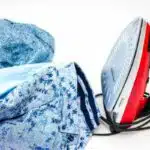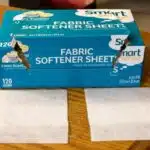Ironing clothes is an essential household chore that requires a significant amount of time and effort. However, with the right tools and techniques, it can become an enjoyable and satisfying task. One of the most important tools for smooth ironing is spray starch. Spray starch helps in preventing wrinkles and creases while providing a crisp finish to your clothes.
Buying commercial spray starch may seem like the easiest option, but it can be expensive and often contains harmful chemicals. Making your own homemade spray starch is not only cost-effective but also eco-friendly and safe for your clothes. In this article, we will explore how to make a homemade spray starch using natural ingredients found in your kitchen pantry. With this simple recipe, you can achieve professional-looking ironed clothes without spending a fortune or exposing yourself to toxic chemicals.
Understanding The Benefits Of Homemade Spray Starch
Spray starch is a crucial element in achieving perfectly ironed clothes. It helps to stiffen fabrics, making them easier to manage and giving them a neater appearance. While store-bought spray starches are readily available, they can be quite expensive and often contain harmful chemicals. In contrast, homemade spray starches offer several benefits, such as cost effectiveness and the use of natural ingredients.
One of the most significant advantages of homemade spray starch is its cost effectiveness. Making your own spray starch is significantly cheaper than buying it from the store. The ingredients used in homemade sprays are readily available and inexpensive, making this an affordable alternative to store-bought sprays. Additionally, you have more control over what goes into your spray starch, allowing you to avoid harmful chemicals and create a product that is safe for you and your family.
Another benefit of homemade spray starch is the use of natural ingredients. Most store-bought sprays contain chemicals that can irritate sensitive skin or cause respiratory problems when inhaled. Homemade sprays, on the other hand, can be made using natural ingredients such as cornstarch or arrowroot powder mixed with water and essential oils if desired. These natural ingredients help to reduce exposure to harsh chemicals while still providing you with the same benefits as store-bought varieties.
Understanding the benefits of homemade spray starch makes it clear why more people are choosing to make their own instead of buying it from the store. Not only is it cost effective but also safer for your health due to its natural ingredient composition. In the next section, we will delve deeper into the chemistry behind spray starch and how it works on fabrics to achieve those perfectly ironed clothes we all want!
The Chemistry Behind Spray Starch
- Starch is composed of long chains of glucose molecules, which are linked together by glycosidic bonds.
- The cross-linking of starch molecules is achieved through a process known as hydrolysis, which breaks the glycosidic bonds.
- When the starch molecules are exposed to a base such as sodium hydroxide, the hydrolysis process releases hydrogen atoms which allows for the formation of new hydrogen bonds.
- These hydrogen bonds then hold the starch molecules together in a lattice-like structure, providing extra strength and rigidity.
- When starch is applied to fabric, the hydrogen bonds allow the starch molecules to form a strong bond with the fabric fibers, making them less prone to wrinkling when ironed.
- Making a homemade spray starch is a simple and economical process. All you need is water, cornstarch, and baking soda to recreate the same chemical reactions that occur in commercial starch products.
Starch Molecules
Starch molecules form the backbone of spray starch chemistry. These molecules are long chains of glucose units that can be derived from various sources, like corn, rice, or wheat. Starch molecules have a unique property that makes them useful in laundry care: they can absorb water and swell. When the starch solution is applied to fabric during ironing, the swollen starch molecules create a barrier between the iron and the fabric, making it easier to press out wrinkles.
To achieve optimal results when using spray starch, it is important to understand how starch application techniques work. One technique involves applying the spray directly onto damp fabric before ironing. This method allows for greater absorption of the starch solution into the fibers of the fabric, creating a stiffer finish. Another technique involves spraying starch onto dry fabric before ironing; this results in less absorption but still provides some crispness and smoothness to fabrics.
Overall, understanding the chemistry behind spray starch and different application techniques can help you achieve better results when ironing your clothes at home. With just a few simple ingredients and tools, you can create your homemade spray starch and experience wrinkle-free fabrics with ease! So go ahead and experiment with different application methods to find what works best for you!
Cross-Linking Process
Moving on to the next subtopic, let’s talk about the cross-linking process in spray starch chemistry. Cross-linking is a crucial step in modifying starch molecules to improve their properties for laundry care. This process involves polymerization reactions that create covalent bonds between starch molecules, resulting in a more rigid and stable structure. These modified starches have enhanced properties like improved resistance to heat, water, and chemicals.
To achieve cross-linking, various starch modification techniques can be used, such as oxidation or esterification. Oxidation involves treating the starch with an oxidizing agent like sodium hypochlorite or hydrogen peroxide. This creates reactive carbonyl groups on the starch molecule that can form cross-links with other starch molecules under certain conditions. On the other hand, esterification involves reacting the starch with an acid derivative like acetic or succinic anhydride; this results in ester bonds forming between neighboring glucose units.
The cross-linking process plays a significant role in creating high-quality spray starch products that are effective in removing wrinkles from fabrics. It improves the stiffness and durability of the sprayed fabric while resisting humidity and perspiration. Understanding this chemistry behind spray starch can help you choose the best product for your laundry needs and ultimately save time and effort when ironing clothes at home!
Hydrogen Bonding
Now that we’ve discussed the importance of cross-linking in spray starch chemistry, let’s move on to another crucial aspect: hydrogen bonding. Hydrogen bonds are a type of intermolecular force that plays a vital role in the properties of water and how it interacts with other molecules. In the case of spray starch, hydrogen bonding affects its ability to spread evenly on fabric and create a smooth surface for ironing.
Hydrogen bonding occurs when a hydrogen atom in one molecule is attracted to an electronegative atom like oxygen or nitrogen in another molecule. In water, these bonds result in the formation of clusters of water molecules held together by strong intermolecular forces. This gives rise to unique properties like high surface tension, which allows small water droplets to form on surfaces instead of spreading out.
In spray starch, hydrogen bonding helps the product adhere to fabric fibers and form a thin film that provides stiffness and wrinkle resistance. When sprayed onto fabric, the starch molecules form hydrogen bonds with both the fabric fibers and neighboring starch molecules, creating a network of interconnected structures that provide strength and durability. Understanding the role of hydrogen bonding in spray starch chemistry can help you choose products that work best for your laundry needs and achieve professional-looking results at home.
Essential Ingredients For Making Homemade Spray Starch
If you’re looking to save some money or avoid using harsh chemicals, making your own spray starch is a great option. Not only does it give you more control over the ingredients that go into your fabric, but DIY starch also provides several benefits. For one, it’s cheaper than store-bought varieties and can be customized to suit your needs.
When it comes to making homemade spray starch, there are several alternatives to traditional cornstarch. One option is arrowroot powder, a natural thickener that helps hold the fabric in place while ironing. Another alternative is liquid vegetable glycerin, which softens fabrics and reduces static cling. White vinegar is another popular ingredient, as it removes any residual soap or detergent from clothes and leaves them feeling fresh.
In addition to its affordability and customizability, DIY starch also offers environmental benefits. By using all-natural ingredients, you can reduce your carbon footprint and promote sustainability in your home. In the next section, we’ll take a closer look at the role of cornstarch in homemade spray starches and how it can help achieve smooth ironing results.
The Role Of Cornstarch In Spray Starch
Cornstarch is a common thickening agent used in spray starch, as it helps to create a heavier, more adhesive spray that is ideal for ironing. It can also be used as an adhesive to create a bond between the fabric and the starch, making it less likely to flake off when ironing. Additionally, cornstarch can be used as a finishing agent, providing a glossy finish and helping to reduce the amount of shine that comes with using traditional starch. Ultimately, cornstarch is an integral component of homemade spray starch, as it adds both thickness and gloss to the mixture. With a few simple ingredients, a homemade spray starch can be created that is just as effective as store-bought versions, but with the added benefit of being all natural. Using cornstarch to make a homemade spray starch is a great way to save money and ensure that you’re using the best quality ingredients for smooth ironing.
Cornstarch As A Thickening Agent
Cornstarch is a versatile ingredient that can be used in various applications, including cooking and laundry care. One of the most popular uses of cornstarch is as a thickening agent. Its ability to absorb liquids and form a thick paste makes it an ideal ingredient for making gravy, sauces, and soups. The benefits of cornstarch as a thickener include its neutral taste, low cost, and easy availability.
When it comes to spray starch for ironing clothes, cornstarch plays a crucial role in achieving smooth results. By adding cornstarch to water, you can create a mixture that will help your clothes look crisp and polished. The starch coats the fibers of the fabric, preventing them from sticking together and reducing wrinkles. Additionally, the cornstarch in spray starch helps to protect your clothes from damage caused by high heat during ironing.
Despite its many benefits, using too much cornstarch in spray starch can cause unwanted buildup on your clothes or even clog your iron’s steam vents. To avoid this problem, it’s important to use the right amount of cornstarch in your homemade spray starch recipe. You can experiment with different ratios of water to cornstarch until you find the perfect balance for your needs. Remember that less is often more when it comes to using cornstarch in cooking or laundry care.
Cornstarch As An Adhesive
Moving on from its role as a thickening agent and spray starch, cornstarch also serves as an adhesive in various DIY projects. When mixed with water, cornstarch creates a paste that can be used to bond different materials together. This adhesive is affordable, readily available, and easy to make at home.
Cornstarch has become increasingly popular as an alternative to traditional adhesives due to its non-toxic and biodegradable properties. It is safe for children to use in craft projects, and it does not emit harmful fumes like some commercial adhesives do. Additionally, cornstarch paste dries clear and can be easily sanded or painted over once dry.
Cornstarch is a versatile ingredient that can be used in various ways around the house. Whether you need a thickener for your soup or gravy or an adhesive for your next crafting project, cornstarch provides a cost-effective and eco-friendly solution. With so many benefits and uses, it’s no wonder why cornstarch continues to be a go-to ingredient for many household needs.
Cornstarch As A Finishing Agent
Now that we’ve discussed the role of cornstarch as a thickening agent and adhesive, let’s explore another use for this versatile ingredient: as a finishing agent. Cornstarch can be used in place of traditional fabric softeners to give your clothes a softer feel without the use of harsh chemicals. This is especially useful for those with sensitive skin or allergies to synthetic fabric softeners.
One of the benefits of using cornstarch as a finishing agent is its eco-friendliness. Cornstarch alternatives are becoming more popular among consumers who want to reduce their environmental impact. Additionally, some companies are now offering eco-friendly packaging options for cornstarch-based products, making them a sustainable choice for those looking to make positive changes in their daily lives.
But how does cornstarch compare in effectiveness to traditional fabric softeners? Many people find that it works just as well, if not better, than commercial fabric softeners. It can help reduce static cling, prevent wrinkles, and leave clothes feeling softer and smoother. Plus, because it is non-toxic and biodegradable, it won’t harm the environment or pose a risk to your health like some synthetic softeners can.
How To Make Basic Homemade Spray Starch
If you’re looking for a way to achieve crisp, smooth ironing results without spending a lot of money on store-bought spray starch, why not try making your own at home? Not only is it cost-effective, but there are also plenty of benefits to using homemade spray starch over commercial products. For example, you can control the ingredients and avoid any harmful chemicals that may be present in store-bought varieties.
To make basic homemade spray starch, all you’ll need is some cornstarch or potato starch and water. Mix one tablespoon of starch with two cups of water in a spray bottle and shake well before each use. When applying the spray to your clothes, be sure to hold the bottle about six inches away from the fabric and apply a light mist. Don’t oversaturate the fabric, as this can cause stiffening or spotting.
If you want to achieve optimal ironing results with homemade spray starch, there are a few tips to keep in mind. First, be sure to use distilled or filtered water to avoid any impurities that could affect the final result. Additionally, test the spray on an inconspicuous area of your garment before using it on the entire piece. Finally, always iron garments while they’re still slightly damp from the spray for best results. With these tips in mind, you’ll be able to achieve beautifully pressed clothes every time!
Adding Essential Oils For Fragrance
After making a basic homemade spray starch, you might want to add a touch of fragrance to your laundry. Essential oils are the perfect solution for this need. Not only do they provide a pleasant aroma, but they also offer the benefits of aromatherapy.
Choosing the right essential oils can be overwhelming since there are so many options available. However, it is important to consider the properties of each oil and how they can benefit you. For example, lavender oil is known for its calming effects, while peppermint oil has an energizing effect. It all depends on what you want to achieve from your laundry experience.
To incorporate essential oils into your homemade spray starch, simply add a few drops into the mixture before pouring it into your spray bottle. Be sure to shake well before using it on your clothes. Enjoy the added benefits of aromatherapy while ironing your clothes and achieving that smooth finish.
- Make a list of essential oils that suit different moods
- Indicate which ones are safe to use around pets
- Explain how much oil should be used per cup of spray starch
- Share hacks on how to mix different essential oils for tailor-made scents
Incorporating essential oils into your homemade spray starch is an excellent way to elevate your laundry experience. Not only will you achieve that smooth finish, but you’ll also benefit from aromatherapy as well. So choose wisely when selecting which oils to use and experiment with different combinations until you find one that suits you best. In the next section, we’ll explore how adding vinegar can enhance the softness of your clothes even further.
Using Vinegar For Extra Softness
As the saying goes, “a little vinegar can go a long way.” This is especially true when it comes to giving your clothes an extra soft touch after ironing. To achieve this, you can make a vinegar dilution by mixing one part white vinegar with three parts water. Simply spray this mixture onto your clothes before ironing and voila! Your clothes will come out softer than ever.
If you’re not a fan of the smell of vinegar, there are alternative solutions to try. One option is to use fabric softener in your wash cycle or add dryer sheets to the dryer. Another idea is to use essential oils, like lavender or peppermint, which not only provide a pleasant scent but also have natural antibacterial properties.
While using vinegar for extra softness is a great tip, it’s important to note that it won’t enhance the strength of your homemade spray starch. For that, we recommend adding borax powder to your starch mixture. This natural mineral has been used for years as a laundry booster and can help create stronger bonds between fibers in your clothes. So if you’re looking for even crisper results when ironing, stay tuned for our next section on enhancing starch strength with borax.
Enhancing Starch Strength With Borax
Borax is a popular ingredient in most starch sprays, and it is known to enhance the strength of the starch. However, if you are looking for borax alternatives, there are some options available. One option is to use cornstarch or potato starch instead of borax. These starches have similar properties as borax and can be used in the same way.
It is essential to note that while borax has many benefits, it can also pose a safety risk. When making your homemade spray starch with borax, ensure to follow all necessary safety precautions. Wear gloves and eye protection when handling borax powder as it can irritate your skin and eyes. Also, keep it away from children and pets as ingestion can cause severe health problems.
If you prefer not to use borax in your homemade spray starch, there are other safe alternatives available. You can try using white vinegar or lemon juice instead of borax to enhance the strength of the starch. Both these ingredients work well and are safe for regular use. However, keep in mind that they may leave a slight smell on your clothes after ironing.
In conclusion, enhancing the strength of your homemade spray starch is possible without using borax. There are several alternatives available that you can use safely without worrying about any adverse effects on your clothes or health. In the next section, we will explore how to make gluten-free spray starch at home using natural ingredients.
Making A Gluten-Free Spray Starch
- Making a gluten-free spray starch is a simple, cost-effective way to make your clothes look crisp and professional.
- The ingredients needed are water, white vinegar, cornstarch, and essential oil.
- To prepare the starch, combine two cups of water, one tablespoon of white vinegar, one tablespoon of cornstarch, and five drops of essential oil in a spray bottle.
- Shake the bottle vigorously until all ingredients are evenly distributed.
- To use the starch, spray it onto the fabric and iron as usual.
- Be sure to test a small area first to ensure that the starch does not discolor the fabric.
Ingredients
Are you someone who enjoys ironing clothes but finds it a hassle to get them perfectly smooth? Look no further! Making your own homemade spray starch can make the task easier and more enjoyable. Choosing the right type of starch is key in achieving that crisp and clean look. There are different types of starch, such as cornstarch, potato starch, or rice starch, each with their unique properties. Cornstarch is a popular choice for its affordability and easy accessibility, while potato starch offers a smoother finish.
Making your own spray starch also has cost benefits over buying store-bought options. You can save money by purchasing a large bag of cornstarch or other preferred starch type and making multiple batches from it. Additionally, homemade spray starch allows you to control the ingredients used and avoid any harmful chemicals that may be present in store-bought options.
Overall, choosing the right type of starch and making your own spray starch can be an affordable and effective way to achieve smooth ironing results while avoiding harmful chemicals. Give it a try and see the difference it makes in your ironing routine!
Preparation
Now that we have discussed the benefits of using starch and making your own spray starch, let’s move on to how to make a gluten-free option. For those who have celiac disease or gluten intolerance, it can be challenging to find products that are safe for use. Luckily, making a gluten-free spray starch is easy and inexpensive.
To prepare a gluten-free spray starch, you will need cornstarch or potato starch as your base ingredient. If you want to add scent to your spray starch, essential oils can also be used. To begin the process, mix 1 tablespoon of cornstarch or potato starch with 2 cups of distilled water in a clean spray bottle. Shake well until the mixture is fully combined.
Next, add a few drops of essential oil if desired and shake again. The essential oil will not only add fragrance but also help eliminate any odors from your clothes. Keep in mind that adding too much oil can cause staining on light-colored fabrics.
Lastly, heat the mixture on medium-high heat until it thickens and becomes translucent. Let it cool down completely before use. Once cooled, shake well and apply to clothes before ironing for perfect results every time! Making homemade alternatives not only saves money but also ensures that you know exactly what goes into the product you are using on your clothes.
In conclusion, making a gluten-free spray starch is an easy DIY project that provides many benefits such as cost savings, control over ingredients used, and avoiding harmful chemicals found in store-bought options. With just a few simple steps and ingredients like cornstarch or potato starch plus distilled water and optional essential oils; anyone can make their own perfect ironing companion at home!
Usage
Now that you know how to make your own gluten-free spray starch, it’s important to understand how to use it effectively. DIY starch alternatives are a great way to save money and ensure that you know exactly what ingredients are being used on your clothes. However, improper application of the starch can lead to unsatisfactory results.
To get the most out of your homemade spray starch, it’s important to apply it correctly. Start by shaking the bottle well before each use. Hold the bottle about 6-8 inches away from the garment and apply a light mist evenly across the fabric. Be careful not to oversaturate the fabric as this can cause staining or make ironing more difficult.
Another tip for effective application is to avoid spraying directly onto dark-colored fabrics as this can leave a white residue. Instead, spray onto a clean cloth and then press onto the garment lightly. With these simple tips, you’ll be able to achieve wrinkle-free clothes without any harmful chemicals or gluten.
In summary, making your own gluten-free spray starch is an easy and cost-effective alternative to store-bought options. However, using it effectively is crucial for achieving optimal results. By following these tips for application, you’ll be able to enjoy perfectly pressed clothes every time without worrying about harmful chemicals or gluten in your products.
Storing And Using Homemade Spray Starch
Making your own homemade spray starch is not only cost-effective but also an eco-friendly alternative to buying commercial products. Interesting fact, did you know that 18% of the world’s carbon emissions come from the textile industry? By making our own spray starch, we can contribute to reducing our carbon footprint. Now that you have learned how to make your own gluten-free spray starch, it’s time to learn how to store and use it effectively.
Storing homemade starch is relatively simple. All you need is a clean and dry spray bottle. Once your starch has cooled down, transfer it into the bottle and store it in a cool and dry place away from direct sunlight. Homemade starch can last up to two weeks without any preservatives added. However, if you want to extend its shelf life, add a tablespoon of vodka or rubbing alcohol as a natural preservative.
Using homemade spray starch on different fabrics requires some knowledge. Natural fabrics such as cotton and linen require a higher concentration of starch compared to synthetic fabrics like polyester or nylon. Here are some tips for using homemade spray starch:
- Shake the bottle well before spraying.
- Hold the iron 6 inches away from the fabric when pressing.
- Be careful not to over-starch delicate fabrics like silk or wool as this may cause damage.
In conclusion, making your homemade spray starch is an easy process that requires minimal effort and reduces waste. Properly storing and using it on different fabric types will ensure perfect ironing results every time. In the next section, we will explore some tips for achieving those perfect results with ease!
Tips For Achieving The Perfect Ironing Results
- When ironing, it is important to use the correct temperature for the fabric being ironed in order to achieve the perfect results.
- Before ironing, it is important to prepare the fabric by pre-treating any stains, and by turning the fabric inside out to reduce the appearance of shine.
- Applying starch correctly is also an important step in achieving the best ironing results; one solution is to make a homemade spray starch using equal parts water and cornstarch.
- To make homemade spray starch, mix together equal parts of water and cornstarch in a spray bottle and shake until the cornstarch is completely dissolved.
- After making the homemade spray starch, spray it lightly onto the fabric and leave it to sit for a few minutes before ironing.
- Once the fabric has been treated with the homemade spray starch and has been ironed, the results should be crisp and smooth.
Use The Right Temperature
Achieving the perfect ironing results is not only about having a good iron or using quality pressing tools, but it’s also about using the right temperature. Proper ironing temperature is essential to get wrinkle-free clothes without damaging the fabric. It’s vital to use the right heat settings for different fabrics because not all fabrics can withstand high heat.
Ironing temperature guidelines are usually found on the care label of your clothes. Always read and follow these instructions before ironing any garment. Cotton and linen require higher temperatures, while silk and delicate fabrics need lower heat settings. If you’re unsure of the proper setting, test a small portion of the fabric first in an inconspicuous area before proceeding with the entire garment.
Using too much heat can scorch your clothes or leave burn marks on them, while insufficient heat won’t remove wrinkles effectively. Additionally, keeping your iron at one temperature throughout may lead to uneven results – some parts may be over-pressed, while others remain wrinkled. Therefore, adjust your iron according to each section of clothing for optimal results. By following these simple tips, you’ll achieve perfectly pressed clothes every time you iron them without causing damage to your precious garments.
Prepare Your Fabric
To achieve the perfect ironing results, it’s not just about having the right iron and temperature setting, but you also need to prepare your fabric properly. This is where pre-wash treatment comes in. Before ironing any garment, it’s essential to pre-wash it first. Pre-washing helps remove dirt, stains and any sizing or finish that may have been applied during manufacturing.
Prepping your fabric before ironing can also ensure that you don’t damage delicate fabrics with harsh chemicals or detergents. For example, silk should be hand washed gently with mild detergent and hung to dry before being pressed. Similarly, wool should be washed in cold water with a gentle detergent and laid flat to dry. By following these pre-wash treatments, you’ll ensure that your fabrics are clean and ready for ironing.
In addition to pre-wash treatment, proper ironing techniques are vital for achieving perfectly pressed clothes. For instance, always use a pressing cloth when ironing delicate fabrics such as silk or linen. A pressing cloth protects the fabric from direct heat and prevents scorch marks on your clothes. Also, avoid using too much pressure when ironing as this can damage the fabric fibers. Instead, use a light touch and move the iron in circular motions to remove wrinkles evenly from each section of clothing. By following these tips along with proper temperature settings, you’ll get wrinkle-free clothes without damaging your garments!
Apply The Starch Correctly
Now that we’ve discussed the importance of pre-wash treatment and proper ironing techniques, let’s move on to another crucial aspect of achieving perfectly pressed clothes – applying starch correctly. Starch is an essential tool in achieving crisp and sharp clothing. However, it’s essential to use the right amount of starch and apply it correctly to avoid damaging your clothes.
The key to proper application of starch is moderation. Too much starch can cause your clothes to become stiff and uncomfortable, while too little may not provide enough stiffness for a perfectly pressed look. To achieve the perfect balance, start by diluting your starch according to the manufacturer’s instructions. Next, spray a light mist of starch onto your clothes before ironing them. Be sure not to overdo it with the spray as too much can cause buildup on your iron, leading to uneven application on your clothes.
When using starch, it’s also important to adjust your ironing technique accordingly. Applying too much pressure or using a high heat setting can cause the starched fabric to stick to the iron or scorch, ruining your garment. Instead, use a low or medium heat setting and glide the iron over the fabric gently in circular motions. This will ensure even distribution of heat and prevent any damage from occurring.
In summary, proper application of starch is essential in achieving perfectly pressed clothing. By following these tips for moderation and adjusting your ironing techniques accordingly, you’ll be able to achieve crisp and sharp clothing without damaging your garments!
Alternative Methods For Wrinkle-Free Clothes
Ironing alternatives can be a lifesaver for those who don’t have time to iron or simply hate the task. One popular method is using a clothes steamer. These devices use hot steam to remove wrinkles from clothes, without the need for an ironing board. They’re also great for delicate fabrics that can’t withstand high heat.
Another natural fabric care alternative is air drying your clothes. Not only does this save energy, but it also helps reduce wear and tear on your clothes. Simply hang your clothes on a line or drying rack, and let them dry naturally. To avoid stiff fabrics, try adding a little bit of fabric softener to the wash before hanging them up.
For those who still prefer ironing, there are other options besides traditional spray starch. A popular DIY alternative is using white vinegar as a substitute. Simply mix equal parts water and white vinegar in a spray bottle and apply to your clothes before ironing. This solution not only helps remove wrinkles but also acts as a natural deodorizer and fabric softener.
Transition Sentence: While these alternatives can help you achieve wrinkle-free clothes without using traditional spray starch, it’s important to know how to avoid common mistakes when using this product.
Avoiding Common Mistakes When Using Spray Starch
Common Mistakes When Using Spray Starch
Spray starch is an effective tool to achieve smooth ironing results, but there are common mistakes you need to avoid. One of the most prevalent blunders is using too much spray starch. Overusing the product can lead to stiff and crunchy fabrics that are uncomfortable to wear. To avoid this mistake, read the label instructions carefully and use a small amount of spray starch at a time.
Another mistake many people make is spraying directly on the fabric. This technique can cause unsightly spots or stains that ruin the garment’s appearance. The correct way to use spray starch is by holding it 6-8 inches away from the fabric and applying it in a light mist. Remember to shake the can well before every use and test it on an inconspicuous area first.
Lastly, not waiting for the spray starch to dry completely can also lead to poor ironing results. Wet or damp fabric will not only stick to your iron but also cause wrinkles instead of removing them. For best results, wait for at least 30 seconds after application before pressing with a hot iron.
- Use small amounts of spray starch at a time.
- Hold the can 6-8 inches away from the fabric.
- Wait for at least 30 seconds after application before pressing with a hot iron.
Effective Techniques for Perfectly Starched Clothes
Now that you know what mistakes to avoid when using spray starch let’s focus on some effective techniques you can use for perfectly starched clothes.
Firstly, choose the right type of spray starch for your needs. There are different formulations available depending on how much crispness you desire or whether you want wrinkle-resistant properties as well. Read labels carefully and choose one that suits your specific needs.
Next, consider prepping your clothes before applying spray starch. Iron them first without any product so that they are smooth and free from wrinkles; this ensures that the starch is evenly distributed. If you’re dealing with particularly tough wrinkles, consider using a fabric conditioner or softener in your washing machine to help loosen them up.
Lastly, when ironing, make sure to use the right temperature and pressure settings for each type of fabric. High-heat settings are typically used for cotton and linen fabrics, while low-heat settings are suitable for delicate fabrics such as silk or nylon.
Remember these effective techniques:
- Choose the right type of spray starch.
- Iron clothes first without any product.
- Use the right temperature and pressure settings for each type of fabric.
In preparation for your next laundry day, now that you know how to avoid common mistakes when using spray starch and some effective techniques to achieve perfectly starched clothes let’s discuss the eco-friendly benefits of homemade spray starch.
Eco-Friendly Benefits Of Homemade Spray Starch
Avoiding common mistakes when using spray starch is crucial to achieving a smooth and polished look on clothes. However, did you know that the store-bought spray starch can be harmful to both our health and the environment? In fact, according to a recent study, about 70% of household cleaning products contain toxic chemicals that can cause respiratory problems and skin irritation. This is where homemade spray starch comes in handy.
Making your own spray starch has numerous benefits. Not only is it cost-effective, but it also promotes sustainability by reducing plastic waste from store-bought chemical-laden sprays. Additionally, homemade starch is healthier since it contains natural ingredients that are free of harsh chemicals. You can make your own homemade spray starch using simple ingredients found in most households such as cornstarch or potato starch.
Here’s a table comparing the benefits of store-bought vs homemade spray starch:
| Benefits | Store-Bought Spray Starch | Homemade Spray Starch |
|---|---|---|
| Cost-effectiveness | Expensive | Cheap |
| Sustainability | Contains harmful chemicals | Reduces plastic waste |
| Health | Contains toxic chemicals | Natural ingredients |
In conclusion, it’s time to ditch the chemical-laden store bought starch and switch to a more natural and sustainable option. By making your own spray starch at home, you will save money while promoting a healthier lifestyle for yourself and the environment. So why not try making your own today? Your clothes (and health) will thank you for it!
Conclusion: Time To Ditch The Chemical-Laden Store Bought Starch
The benefits of natural ingredients in our daily lives cannot be overemphasized. Homemade spray starch is an excellent alternative to the chemical-laden store-bought starches that are harmful to our health and the environment. DIY spray starch recipes use natural ingredients such as cornstarch, essential oils, and distilled water, which are safe for us and our environment.
Not only do these natural ingredients ensure a healthy lifestyle, but they also save you money. The cost of buying a can of spray starch may seem small, but it adds up over time. With DIY spray starch recipes, you can make your own starch at home for a fraction of the cost. Plus, you have control over the amount and quality of the ingredients used.
In conclusion, making homemade spray starch is not only easy but also beneficial to our health and wallets. With the abundance of DIY recipes online, there’s no reason why we should continue using store-bought chemicals on our clothes. So ditch those harsh store-bought sprays and try out some homemade recipes today!
Conclusion
Spray starch is a must-have for anyone who wants wrinkle-free clothes. However, store-bought spray starch can contain harmful chemicals that are not eco-friendly. Fortunately, making your homemade spray starch is easy and affordable. By using natural ingredients such as cornstarch and essential oils, you can create a high-quality spray starch that will leave your clothes looking sharp and smelling great.
To make homemade spray starch, you need to understand the chemistry behind it. Spray starch works by adding a thin layer of “stiffness” to the fabric fibers, which makes them more resistant to wrinkles. To achieve this effect, you need to combine water with cornstarch and other ingredients in the right proportions. By following simple recipes and tips, you can create different types of homemade spray starches that suit your needs.
Cornstarch is the key ingredient in homemade spray starch because it is an excellent thickener and binder. It also has anti-static properties that help prevent clothes from clinging together or attracting dust. Other ingredients such as essential oils or vinegar can be added to give your clothes a pleasant scent or enhance their cleaning power. Homemade spray starches are not only effective but also eco-friendly since they do not contain harmful chemicals or come in plastic bottles.
In conclusion, by making your homemade spray starch, you can save money while protecting the environment from harmful chemicals. With simple ingredients like cornstarch and water, you can create high-quality sprays that leave your clothes looking smooth and fresh. Whether you prefer scented or unscented sprays, there are many recipes available online that cater to different preferences. Ditching chemical-laden store-bought sprays has never been easier!
Image Credits
- “IRON MAN gantry machine vol.2 by Choi sanghun.” by STICK KIM (featured)
























![How To Wash And Care For White Clothes 24 The only genuine borax soap cleanses hygienically saves the clothes and hands. 20 Mule-Team brand Boraxo white laundry soap [front]](https://green-life.blog/wp-content/uploads/2023/05/YDXLLCovnOjq-150x150.jpg.webp)


![How To Remove Perfume Odors From Clothes 27 For pungency, strength, durability and delicacy of odor. Read's Grand Duchess Cologne. [back]](https://green-life.blog/wp-content/uploads/2023/05/b-myfoHrx-jq-150x150.jpg.webp)

